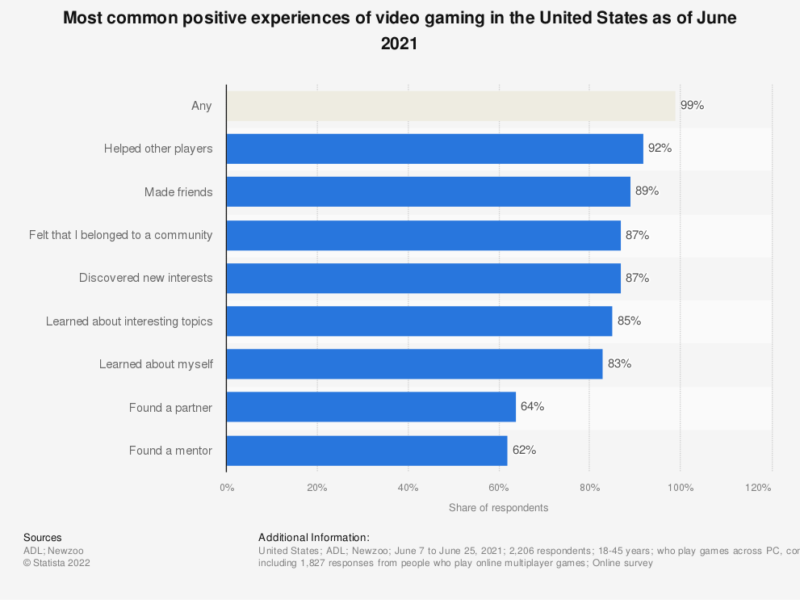The Rise of Online Gaming
The Early Days of Online Gaming
The early days of online gaming marked a significant shift in the way people interacted with video games. In the late 1970s and early 1980s, Atari introduced the concept of multiplayer gaming with titles like “Maze War” and “Air Warrior.” These games allowed players to connect their computers via dial-up modems and engage in virtual battles with opponents from around the world. While the graphics and gameplay were relatively simple compared to today’s standards, the thrill of competing against real people in real-time was a groundbreaking experience. These early online games laid the foundation for the evolution of online gaming, paving the way for the immersive and expansive virtual worlds we enjoy today.
The Advent of Multiplayer Online Games
The Advent of Multiplayer Online Games
With the rapid advancement of technology, the gaming industry witnessed a significant shift in the late 1990s with the advent of multiplayer online games. These games revolutionized the way people interacted and played, allowing players from all around the world to connect and compete in virtual environments. The introduction of games like Ultima Online and EverQuest paved the way for a new era of gaming, where players could form alliances, embark on quests together, and engage in player-versus-player battles. The immersive nature of these multiplayer online games created a sense of community and camaraderie among players, fostering friendships and rivalries that transcended geographical boundaries. As internet speeds improved and technology continued to evolve, multiplayer online games became more sophisticated, offering vast open worlds, realistic graphics, and complex gameplay mechanics. The advent of multiplayer online games not only transformed the gaming landscape but also laid the foundation for the future of online gaming, setting the stage for the emergence of virtual reality and other innovative gaming experiences.
The Impact of Broadband Internet
The Impact of Broadband Internet
The advent of broadband internet has revolutionized the online gaming industry, propelling it to new heights and transforming the way games are played and experienced. With faster and more reliable internet connections, players can now engage in seamless multiplayer experiences, allowing them to connect and compete with gamers from all around the world. The introduction of broadband internet has also paved the way for the rise of massive multiplayer online games (MMOs), where thousands of players can simultaneously interact in vast virtual worlds. This increased connectivity has not only enhanced the social aspect of gaming but has also facilitated the development of more complex and immersive gameplay mechanics. Additionally, the availability of high-speed internet has made it possible for game developers to deliver regular updates and downloadable content, ensuring that players always have fresh and engaging experiences. Overall, the impact of broadband internet on online gaming has been transformative, enabling a new era of connectivity, interactivity, and innovation in the gaming landscape.
The Evolution of Graphics and Gameplay
From Simple 2D Graphics to 3D Environments
From Simple 2D Graphics to 3D Environments
The transition from simple 2D graphics to immersive 3D environments has been a game-changer in the evolution of online games. In the early days of online gaming, players were limited to pixelated characters and flat backgrounds, offering a basic visual experience. However, with advancements in technology, game developers began harnessing the power of 3D graphics, revolutionizing the way games are played and experienced. The introduction of 3D environments brought a new level of realism and depth to online games, allowing players to explore intricately designed virtual worlds with stunning visual effects. This shift not only enhanced the visual appeal of games but also opened up new possibilities for gameplay mechanics, enabling players to interact with their surroundings in ways that were previously unimaginable. The transition from simple 2D graphics to immersive 3D environments marked a significant milestone in the evolution of online games, paving the way for the next generation of virtual reality experiences.
The Introduction of Realistic Physics and Effects
The introduction of realistic physics and effects in online games marked a significant milestone in the evolution of gaming. With advancements in technology, game developers were able to create immersive virtual worlds that closely resembled reality. Realistic physics allowed for more accurate and lifelike movements, making gameplay feel more authentic and engaging. Additionally, the introduction of advanced visual effects, such as dynamic lighting and particle systems, added a new level of visual realism to online games. These advancements not only enhanced the overall gaming experience but also opened up new possibilities for game mechanics and storytelling. Players could now interact with their virtual environments in ways that were previously unimaginable, further blurring the line between the digital and physical worlds. The introduction of realistic physics and effects revolutionized online gaming, setting the stage for the future of immersive gameplay experiences.
The Integration of Virtual Reality Technology
The Integration of Virtual Reality Technology has revolutionized the online gaming industry, taking players on an immersive journey like never before. With the advent of advanced VR headsets and motion-tracking devices, gamers can now step into a virtual world that feels incredibly real. This technology has not only enhanced the visual and auditory experience but has also introduced a new level of interactivity. Players can physically move and interact with objects in the virtual environment, creating a sense of presence and making the gaming experience more engaging and captivating. The integration of virtual reality technology has opened up a whole new realm of possibilities for online games, allowing players to fully immerse themselves in the virtual worlds they explore.
The Emergence of Massive Multiplayer Online Games (MMOs)
The Birth of MMOs
The Birth of MMOs marked a significant turning point in the evolution of online games. In the late 1990s, the emergence of Massively Multiplayer Online games revolutionized the gaming industry and forever changed the way people interacted with virtual worlds. One of the earliest and most influential MMOs was Ultima Online, released in 1997. It allowed thousands of players to simultaneously explore a vast and immersive fantasy realm, fostering a sense of community and collaboration. This groundbreaking concept laid the foundation for future MMOs, paving the way for the genre’s exponential growth and the development of iconic titles like World of Warcraft and EVE Online. The Birth of MMOs not only introduced a new level of social interaction and shared experiences but also set the stage for the eventual integration of virtual reality technology into online gaming.
The Expansion of MMO Genres
The expansion of MMO genres has been a significant development in the evolution of online games. With the advancement of technology and the increasing popularity of multiplayer gaming, developers have been able to create a wide variety of MMO genres to cater to different interests and preferences. From the early days of text-based MUDs to the massive worlds of MMORPGs, players now have the opportunity to immerse themselves in virtual realms that span across various themes and settings. Whether it’s exploring fantasy realms, engaging in intense PvP battles, or even building and managing virtual societies, the expansion of MMO genres has opened up a whole new world of possibilities for online gamers. As technology continues to advance, we can expect even more diverse and immersive MMO experiences, including the exciting emergence of virtual reality MMOs.
The Social Aspect of MMOs
The social aspect of massively multiplayer online games (MMOs) has undergone a remarkable transformation over the years. In the early days of online gaming, such as during the Atari era, multiplayer experiences were limited to local co-op or competitive play. However, with the advent of MMOs, players were suddenly able to connect and interact with thousands of individuals from all around the world. These virtual worlds became vibrant communities, where players could form friendships, join guilds, and embark on epic quests together. The social aspect of MMOs has evolved further with the introduction of voice chat, social media integration, and virtual reality. Today, players can not only communicate through text, but also hear each other’s voices, share experiences on platforms like Facebook and Twitter, and even physically immerse themselves in the game world through virtual reality headsets. The social aspect of MMOs has truly transformed online gaming into a dynamic and interconnected experience.
The Impact of Online Gaming Communities
The Birth of Online Gaming Communities
The Birth of Online Gaming Communities
With the rapid advancement of technology, the birth of online gaming communities revolutionized the gaming industry. In the early 1990s, the emergence of the internet paved the way for gamers to connect and interact with each other on a whole new level. Online gaming communities provided a platform for players from all around the world to come together, share their experiences, and engage in multiplayer gameplay. This marked a significant shift from the solitary experience of playing games on consoles like Atari to a more social and collaborative gaming experience. As these communities grew, players began forming clans, guilds, and teams, fostering a sense of camaraderie and competition. The birth of online gaming communities not only transformed the way games were played but also laid the foundation for the future development of virtual reality and other immersive gaming experiences.
The Role of Online Forums and Chatrooms
The Role of Online Forums and Chatrooms
Online forums and chatrooms have played a pivotal role in shaping the evolution of online games. These platforms have provided gamers with a space to connect, share experiences, and exchange valuable information. In the early days of online gaming, forums and chatrooms served as the primary means of communication between players, allowing them to discuss strategies, troubleshoot technical issues, and form communities around their favorite games. As technology advanced, these platforms became even more essential, facilitating the growth of online gaming communities and fostering a sense of camaraderie among players. Today, online forums and chatrooms continue to serve as vital hubs for gamers, enabling them to engage in lively discussions, seek advice, and forge lasting friendships within the ever-expanding world of online gaming.
The Rise of eSports and Competitive Gaming
The Rise of eSports and Competitive Gaming
In recent years, the world of online gaming has witnessed a remarkable surge in the popularity of eSports and competitive gaming. With the advent of advanced technology and the widespread accessibility of high-speed internet, gaming has transformed from a casual pastime into a highly competitive and organized sport. eSports tournaments, such as the League of Legends World Championship and The International Dota 2 Championship, now attract millions of viewers worldwide, rivaling traditional sports events in terms of viewership and prize pools. This rise in competitive gaming has not only created a new avenue for professional gamers to showcase their skills but has also given rise to a thriving industry of sponsorships, endorsements, and professional teams. As eSports continues to gain mainstream recognition, it is clear that competitive gaming has become an integral part of the evolution of online games, shaping the future of the gaming industry.
The Influence of Microtransactions and Free-to-Play Models
The Introduction of Microtransactions
The Introduction of Microtransactions
One significant development in the evolution of online games is the introduction of microtransactions. Microtransactions refer to small, optional purchases made within a game that enhance the player’s experience or provide additional content. This monetization model gained popularity in the early 2000s and has since become a common feature in many online games. With the rise of free-to-play games, microtransactions have become a vital source of revenue for developers, allowing them to offer their games for free while still generating income. While some players appreciate the ability to customize their gaming experience or gain a competitive edge through microtransactions, others have raised concerns about the potential for pay-to-win scenarios or excessive spending. Despite the controversy surrounding microtransactions, their introduction has undoubtedly transformed the online gaming industry and continues to shape the way games are developed and monetized.
The Controversy Surrounding Pay-to-Win Mechanics
The Controversy Surrounding Pay-to-Win Mechanics
One of the most contentious issues in the world of online gaming is the rise of pay-to-win mechanics. These mechanics refer to in-game features or items that can be purchased with real money, giving players who are willing to spend more a significant advantage over those who choose not to. While some argue that pay-to-win mechanics provide a way for developers to monetize their games and support ongoing updates, others believe that they create an unfair playing field and undermine the principles of skill and strategy. Critics argue that pay-to-win mechanics can lead to a pay-to-progress mentality, where success is determined by the size of one’s wallet rather than one’s gaming abilities. Additionally, the controversy surrounding pay-to-win mechanics extends to concerns about their impact on game balance, player satisfaction, and the overall integrity of the gaming experience. As the popularity of online games continues to grow, the debate over pay-to-win mechanics shows no signs of abating, with players, developers, and regulators all grappling with finding a balance between profitability and fair competition.
The Rise of Free-to-Play Games
The Rise of Free-to-Play Games
In recent years, the gaming industry has witnessed a significant shift towards free-to-play games, marking a new era in online gaming. Free-to-play games, also known as freemium or F2P games, have revolutionized the way players access and engage with online gaming experiences. This business model allows players to download and play games for free, with the option to make in-game purchases to enhance their gameplay or unlock additional content. The rise of free-to-play games can be attributed to several factors, including advancements in technology, the widespread availability of high-speed internet, and the increasing popularity of mobile gaming. This model has not only democratized gaming by making it more accessible to a wider audience but has also created new opportunities for game developers and publishers to monetize their products. As the gaming industry continues to evolve, it is clear that free-to-play games have become a dominant force, shaping the future of online gaming.
The Future of Online Gaming: Virtual Reality and Beyond
The Integration of Virtual Reality Technology
The Integration of Virtual Reality Technology has revolutionized the online gaming industry, taking it to new heights of immersion and interactivity. With the advent of advanced virtual reality headsets and motion tracking systems, players can now step into virtual worlds and experience games in a whole new way. The integration of virtual reality technology has not only enhanced the visual and auditory aspects of gaming but has also introduced a new level of physicality, allowing players to physically interact with the virtual environment. This technology has opened up a world of possibilities, enabling gamers to engage in realistic simulations, explore fantastical realms, and even compete in virtual sports. As virtual reality continues to evolve, it is expected to further blur the lines between the real and virtual worlds, creating an even more immersive and captivating gaming experience.
The Potential of Augmented Reality Gaming
The Potential of Augmented Reality Gaming
Augmented reality (AR) gaming has emerged as a groundbreaking technology that holds immense potential for transforming the gaming industry. Unlike virtual reality (VR) gaming, which immerses players in a completely virtual environment, AR gaming overlays digital elements onto the real world, enhancing the player’s perception and interaction with their surroundings. This innovative technology has the ability to revolutionize the way we play games by seamlessly blending the virtual and physical worlds. With the advent of powerful smartphones and wearable devices, AR gaming has become more accessible to a wider audience, allowing players to engage in immersive gaming experiences wherever they are. From interactive treasure hunts in city streets to battling virtual creatures in your own backyard, the possibilities for AR gaming are limitless. As the technology continues to advance, we can expect to see even more sophisticated and captivating AR games that push the boundaries of what is possible in the gaming world.
The Role of Artificial Intelligence in Online Games
The Role of Artificial Intelligence in Online Games
Artificial Intelligence (AI) has revolutionized the world of online gaming, enhancing the player experience and pushing the boundaries of what is possible. In recent years, AI has become an integral part of game development, enabling more realistic and immersive gameplay. One of the key roles of AI in online games is the creation of intelligent non-player characters (NPCs) that can interact with players in a dynamic and lifelike manner. These NPCs are programmed with advanced algorithms that allow them to adapt to the player’s actions, making the game more challenging and engaging. Additionally, AI is used to develop sophisticated game environments, where the behavior of the virtual world is governed by intelligent algorithms. This enables the creation of dynamic and unpredictable game scenarios, keeping players on their toes and ensuring a unique gaming experience every time. With the continuous advancements in AI technology, the role of artificial intelligence in online games is only expected to grow, promising even more immersive and realistic gaming experiences in the future.


